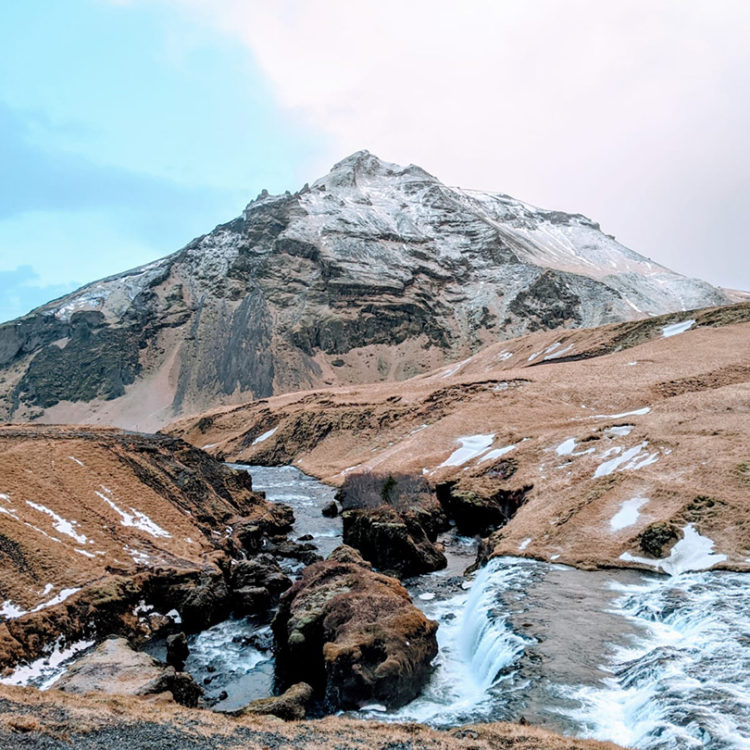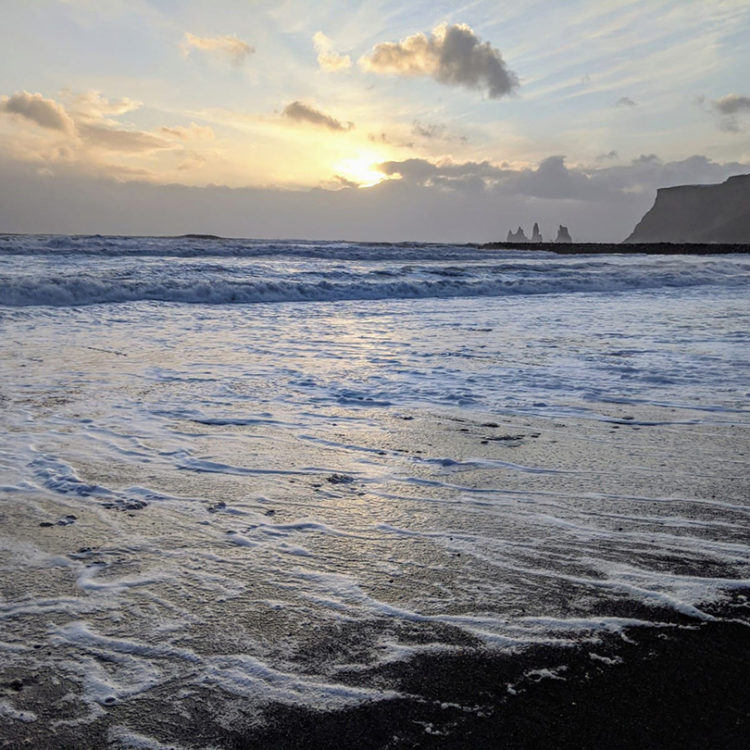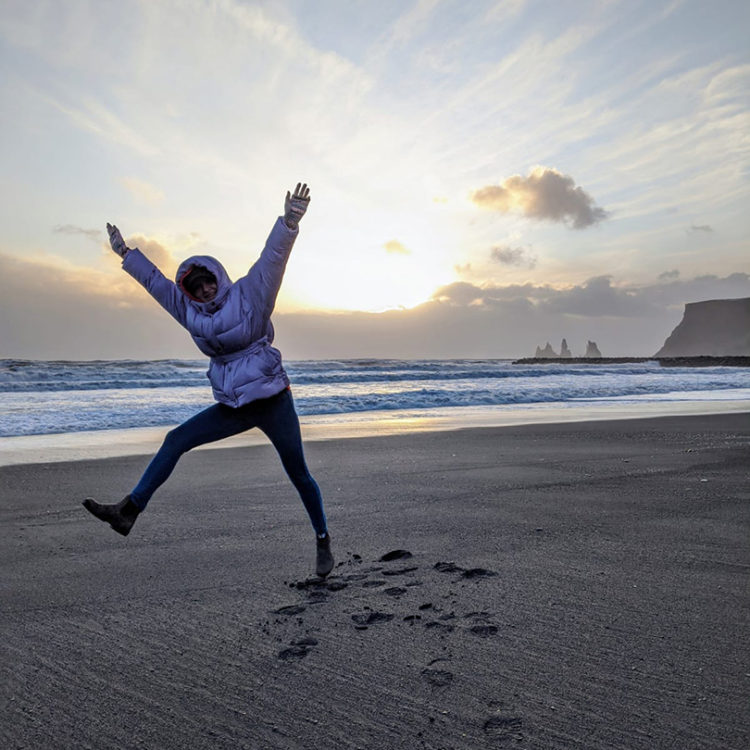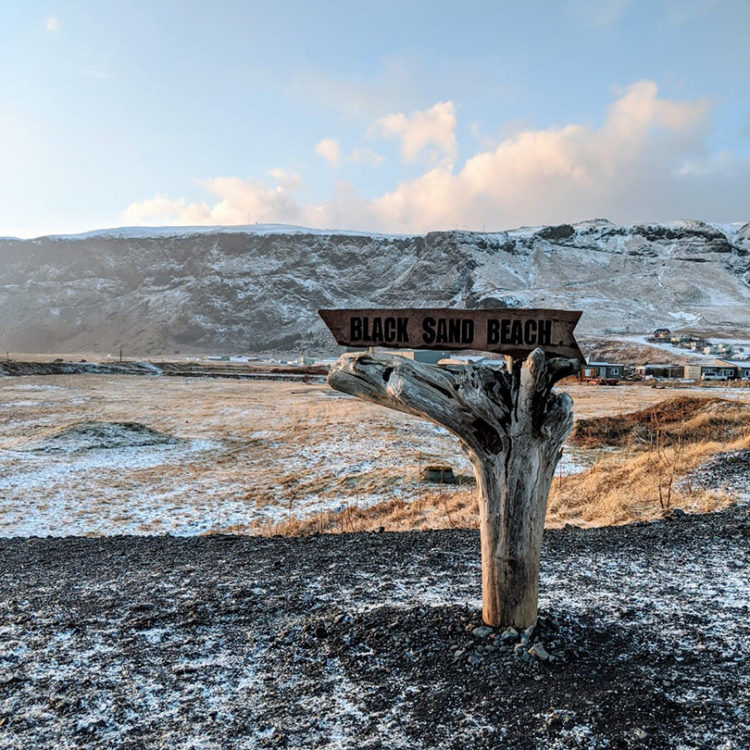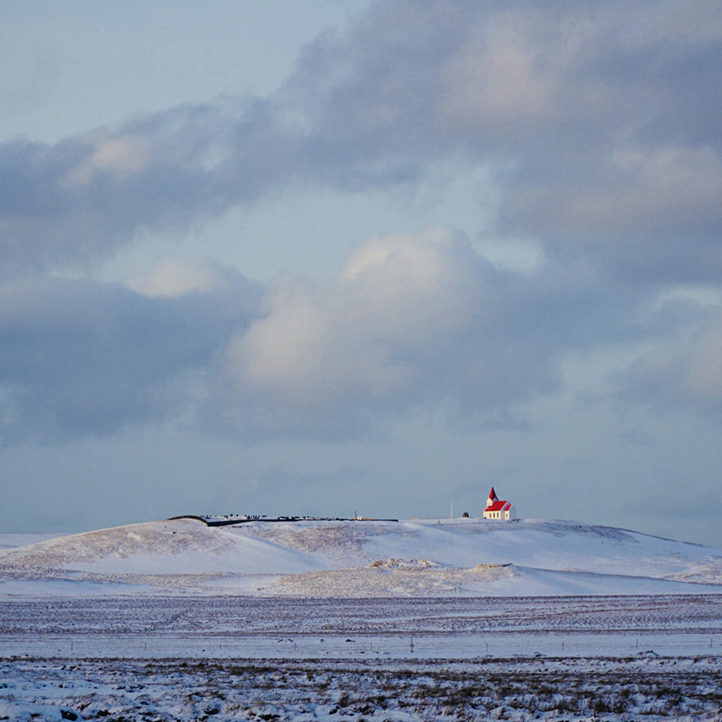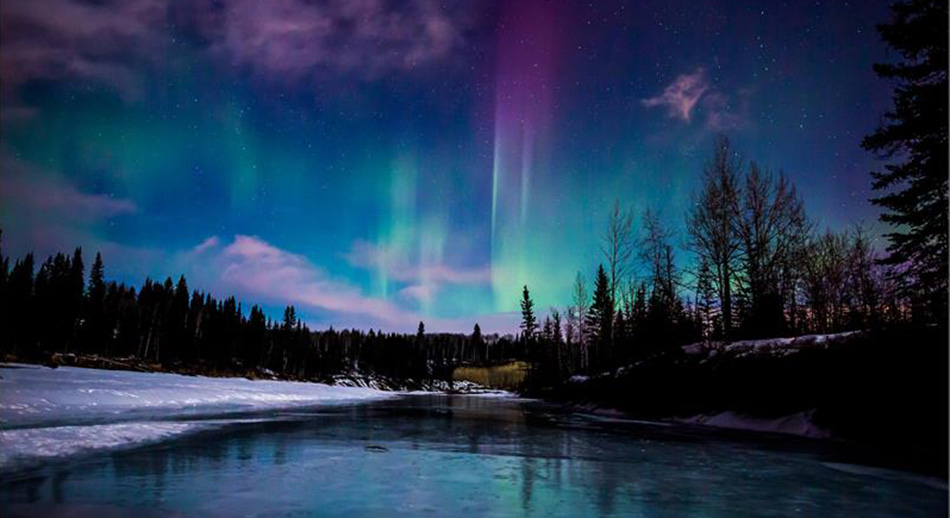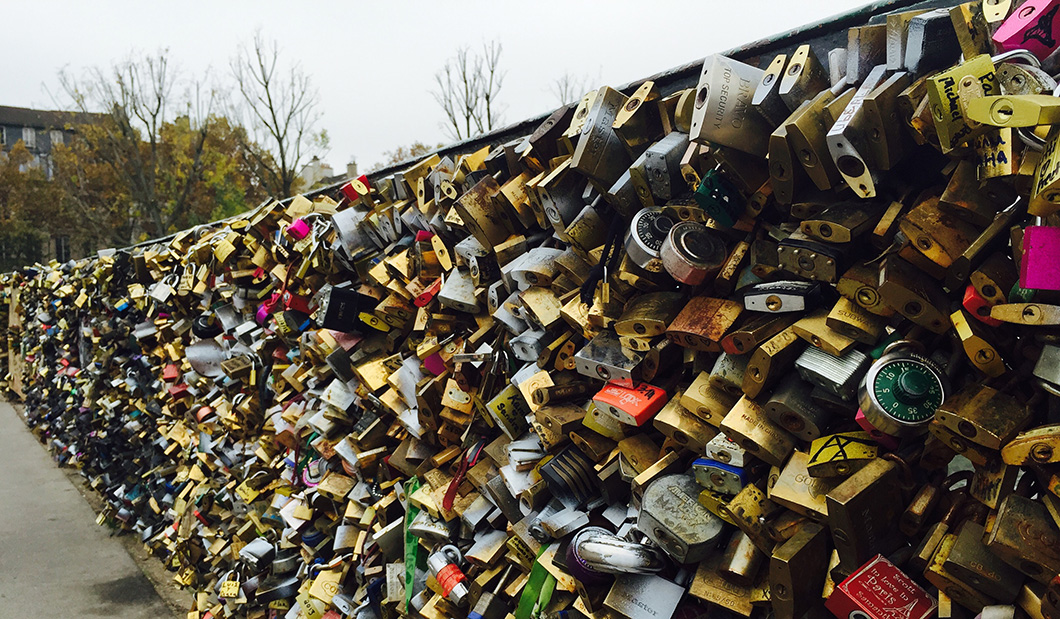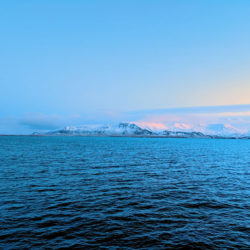Iceland was a dream come true trip, full of spectacular scenery, secluded and famous hot springs, more waterfalls, and volcanoes than I could count. This northern island pleasantly surprised me and gave me many reasons to come back. Here is what I learned and found out about this isolated island.
What you’ll hear about winter weather: it’s freezing with constant negative temperatures, and lots of snow.
Actual winter weather in Iceland:
Fun fact, an average temperature in the winter in New York is lower than in Iceland. However in Iceland, the weather is very unpredictable and will vary day-to-day. To give you an idea during my seven-day trip, I experienced it all as if traveling thought different climate zones. One day I felt winds up to 30 mph and, at times, even stronger. Other days felt like a hurricane swallowed the whole island. During this time, you could experience strong winds, blizzard snow, low clouds, and powerful hail storms that lasted up to ten minutes at a time. Some days were gorgeous, sunny days without any sudden changes in the weather. As well I come across rain, wind, and warm enough temperature to melt the snow of the highest mountains.
Food prices: before traveling to Iceland, I heard many horror stories about the food. How expensive it was and how little of it was available at supermarkets.
What I found out about the food:
As it turns out, everything is okay with the food prices, and it’s variety. Every kind of food is available in Iceland. The shops don’t lack variety or quality of foods, and the prices are significantly lower than what I initially expected. To note, the smaller the town, the smaller the grocery store will be. As well if you are traveling from the U.S., the prices are going to a bit more expensive but not as dramatic as you might think.
P.S. If you have a Costco membership, I advise you to stack up with food there and travel all over Iceland with coolers and food from Costco.
Everything I heard about the restaurants in Iceland is true.
Restaurants: Now, if you are plan on eating at restaurants, get ready to pay big money. Imagine going out to dinner in Manhattan to a five-star restaurant where beer is 12 dollars a glass, not to mention a 40 dollar meal well expect the same prices in Iceland during lunchtime except it will be a burger joint. It wouldn’t be cheap; however, if you have the budget and can splurge a little, then try one of the many restaurants in Reykjavik.
Hotels: When traveling, I usually book Airbnb, however in Iceland, I got to stay at three hotels two in Keflavik next to the airport for easier access to the Blue Lagoon, and the other was in Reykjavik. All three hotels were under eighty dollars a night, and all three offered complimentary breakfast. The two hotels in Keflavik had free parking. The Reykjavik Downtown HI Hostel had only street parking, which you needed to pay through an app or website. On the website you can find out the operating hours and prices. For free parking, information click on Reykjavik-rent-a-car, and to pay for parking, click on my-parking.
Car Rental: It seems here in Iceland car rental companies have a policy of scaring you into purchasing every kind of protection there is on top of paying extra for a GPS and in-car Wifi.
Now, if you are familiar with a standard smartphone, then you must know that you can download an offline map to drive around Iceland. This map works anywhere and needs no wifi. Another point to know is if you are traveling during the winter, the rental company will suggest to you to buy a sun protection plan. However, during winter months, Iceland has shorter days with a few hours of sunlight, and to be exact, you’ll get 4 to 6 hours of daylight if lucky. The rest of the time, the island is submerged in darkness and clouds. Don’t waste your money on a protection that you will have no use for. If you are traveling during the summer note the sun doesn’t set, it sits on the horizon a phenomenon called white-nights, get the protection you’ll have more chances of damaging the car. For any other protection such as accidents and theft, get a good credit card such as chase sapphire that will cover your vehicle. Read this post about the credit card “5 Chase Sapphire Preferred Benefits You Might Not Know About” by Richard Kerr. Also to note you can rent any car, small or big, I recommend a four-wheelers, a large car, especially if you plan on venturing north.
Road conditions: in the winter, expect road closures due to avalanches and severe driving conditions. Please check this website for road closers and road conditions.
Gas what I heard about gas before traveling here: it’s very expensive.
Gas prices: gas is very expensive if you are traveling from the U.S. If you are traveling from Europe as I am and had time to adjust and get used to the European gas prices, you won’t notice a considerable price variation. For a small car, such a Toyota hybrid, a full tank can cost about 60 dollars. Try to get a diesel run car, because just like anywhere in the world it costs less. If you have a Costco membership fill up at their gas station, you’ll see a 40 króna difference in the price. On average, the gas per gallon is $6.50 in Iceland and in the Netherlands (where I currently live), the price per gallon is $7.20.
Overall, Iceland is considered an expensive trip, and if you need tips and advice on how to save money, then you must read this excellent post, The Do’s and Don’ts of Travelling Iceland on a Budget by Four Broads Abroad.
What to pack?
Shoes: Pack two pairs of shoes. First pair a tall, knee-high boots and the other a more of an ankle boot for hiking. As well as try to bring dark shoes, because ash and volcanic rock can and will stain your light shoes.
Coat: A warm jacket is a must, however, make sure that it’s waterproof and windproof. I recommend a Canada Goose parka, however below, you can find more jacket options.
Pant: Pack windproof and waterproof pants because if you plan on walking to any of the attractions or taking tours to ice caves and such, trust me, you’ll regret not having them.
Sweatshirts: A warm hoodies/tops are a must, and mine from Roots saved me and kept me warm.
Accessories to bring: heat tech undergarments, they will come in handy during hikes and snowstorms. Two pairs of gloves, just in case the one pair will get wet or fly away. A warm hat and snowboarding goggles (the goggles will be handy during 30mph wind and snowstorms.) As well as bring anti slip rubber crampons, many of the walkways don’t get clean; therefore, they are very slippery and icy. Other items to consider are a thermos flask for hot water and a reusable water bottle. The last things to bring are items for the hot springs, inexpensive pair of flip flops and a bathing suit.

